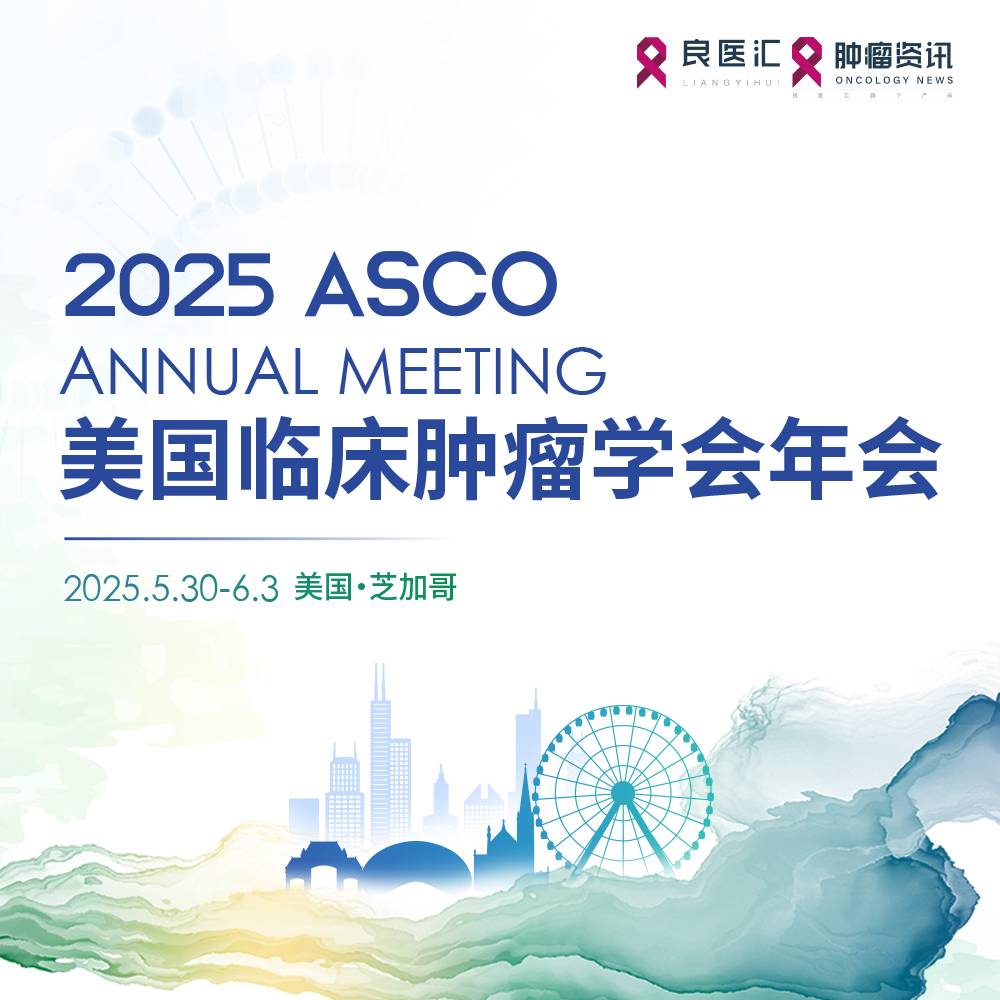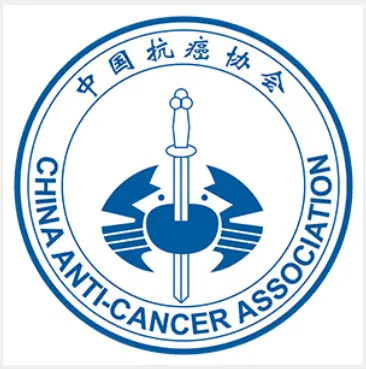AACR期刊编辑们从7月刊中选出了一些必读文章。这些精选文章包括关于合成致死性(胶质母细胞瘤)和合成必要性(结直肠癌)基因的新发现、两项临床试验以及对肉瘤宣传月的致敬等等。以下部分推荐的文章可限时免费在线阅览全文。
Journal: Cancer Research Communications
Allogeneic Anti-BCMA CAR T Cells Are Superior to Multiple Myeloma-derived CAR T Cells in Preclinical Studies and May Be Combined with Gamma Secretase Inhibitors
BCMA-targeted chimeric antigen receptor (CAR) T-cell therapy has benefited some patients with multiple myeloma; however, the cancer eventually relapses in patients who respond. Typically, CAR T cells are developed from a patient’s own T cells. Here, researchers developed BCMA-targeted CAR T cells using T cells from healthy donors instead of from the patient. They then used preclinical models to compare the efficacy of these allogeneic CAR T cells to the autologous CAR T cells typically used in treatment. They found that T cells from healthy donors were more easily transduced with the CAR construct than T cells from patients with relapsed multiple myeloma. CAR T cells generated from healthy donors showed a higher percentage of memory CD8+ T cells and lower expression of immune checkpoint proteins than those generated from patients with relapsed disease, suggesting that allogenic CAR T cells may be more cytotoxic. In line with these observations, the allogeneic CAR T cells showed superior cytotoxicity in in vitro assays, and they efficiently targeted primary multiple myeloma cells in an ex vivo model. The addition of a gamma secretase inhibitor, which targets an enzyme that cleaves BCMA from multiple myeloma cells, enhanced the cytotoxicity of allogeneic CAR T cells. The authors propose allogeneic healthy donor CAR T cells as a potential therapeutic option for patients with relapsed multiple myeloma.
Journal: Cancer Prevention Research
Aspirin and the Risk of Colorectal Cancer According to Genetic Susceptibility among Older Individuals
While the U.S. Preventive Services Task Force (USPSTF) has recommended the use of daily aspirin for certain individuals aged 50-59 for the prevention of cardiovascular disease and colorectal cancer, it is not recommended for individuals over 60, due to an increased incidence of bleeding-related side effects. However, some speculate that the benefit of daily aspirin may outweigh the risks in individuals at a high genetic risk of colorectal cancer. In this study, the researchers retrospectively calculated polygenic risk scores (PRS)—estimates of disease risk based on the presence of multiple genetic variants—for 12,609 individuals enrolled in the ASPREE clinical trial, which evaluated the potential health benefits of daily aspirin among older adults. A higher PRS correlated with an increased risk of colorectal cancer development; those in the top quintile of PRS were 85 percent more likely to develop colorectal cancer than those in the bottom quintile. However, aspirin intake was not significantly associated with colorectal cancer risk among individuals with low, medium, or high PRS. The researchers noted that previous studies that identified a protective effect of aspirin against colorectal cancer chiefly observed the benefit in younger individuals and those with a long duration of aspirin use. Given that most individuals enrolled in the ASPREE trial were older than 70, these data do not contradict the current guidelines and may warrant further investigation of the mechanisms underlying the differential benefits of aspirin at different ages.
Journal: Cancer Immunology Research
Comprehensive Characterizations of Immune Receptor Repertoire in Tumors and Cancer Immunotherapy Studies
A key determinant of the immune system’s efficacy against diseases and tumors is the diversity of B-cell and T-cell receptors, which is most pronounced in the complementarity determining region 3 (CDR3) of the receptors. Studying receptor diversity can help cancer researchers identify new biomarkers of tumor immune responsiveness or immunotherapy efficacy, but comprehensive receptor sequencing can be limited by cost and tissue availability. In this study, the researchers used a computational algorithm, TRUST4, to determine CDR3 diversity using RNA sequencing data from The Cancer Genome Atlas (TCGA). They found that receptor diversity was inversely correlated with patient age, suggesting an aging-related phenomenon known as immunosenescence. When a B cell or T cell encounters a target matching its receptor, it sparks the processes of clonal expansion—the rapid production of cells with the same receptor—and somatic hypermutation—the robust editing of receptor regions to optimize antigen recognition. The researchers found that the genes CCL5, MZB1, and FCRL5 were associated with clonal expansion. Somatic hypermutation typically produced an abundance of tyrosine residues on receptors, a discovery that could help researchers design better antibody-based therapies. In a subset of patients treated with immunotherapy, the researchers further found that enhanced clonal expansion of B cells and an increase in IgG1 and IgG3 antibodies correlated with responsiveness, suggesting a role for B cells in the antitumor immune response induced by immunotherapy that warrants future investigation. The authors developed an interactive, open-access program so that other researchers may perform further analyses using these receptor sequences. A commentary on this study can be found here.
Journal: Cancer Epidemiology, Biomarkers & Prevention
Evaluating the Potential of Polygenic Risk Score to Improve Colorectal Cancer Screening
Current standards of colorectal cancer screening often involve a noninvasive stool test, such as a fecal immunochemical test (FIT), followed by a colonoscopy for patients with positive results. However, FIT has a high false positive rate, leading some researchers to investigate ways to improve its specificity. In this study, the researchers evaluated the genomes of 2,829 patients with positive FIT tests who, during a follow-up colonoscopy, presented with high-risk lesions (cases) or low-risk or no lesions (controls). They used 62 genetic variants previously associated with colorectal cancer development to calculate a PRS for each study participant. Individuals with 65 or more variant alleles were 2.22 times more likely to have high-risk lesions than individuals with 54 or fewer variant alleles. When combined with other determinants of colorectal cancer risk, a model accounting for age, sex, PRS, and FIT results more accurately predicted which patients had high-risk lesions than models accounting for age and sex alone, age and sex plus PRS, and age and sex plus FIT results. The authors suggest that combining PRS scores with FIT results to determine colorectal cancer risk could decrease the number of unnecessary colonoscopies while maintaining a high sensitivity to identify high-risk lesions. This study was highlighted in the July issue.
Journal: Molecular Cancer Therapeutics
HJM-561, a Potent, Selective and Orally Bioavailable EGFR PROTAC That Overcomes Osimertinib-resistant EGFR Triple Mutations
Tyrosine kinase inhibition is one of several approaches employed to treat lung cancers. Osimertinib is a tyrosine kinase inhibitor that blocks the growth-promoting activity of epidermal growth factor receptor (EGFR) mutants that are present in many lung cancers. While osimertinib has shown promising clinical activity, most patients’ cancers eventually become resistant to it, commonly through a C797S mutation in EGFR. In this study, the authors developed and tested HJM-561, a proteolysis targeting chimera (PROTAC) that selectively degrades certain EGFR triple mutants (either the Del19/T790M/C797S mutant or the L858R/T790M/C797S mutant). They found that HJM-561 inhibited the proliferation of cells that expressed either of these EGFR mutants but did not affect the proliferation of cells with wild-type EGFR. In mouse models, HJM-561 administration slowed the growth of tumors driven by the Del19/T790M/C797S EGFR triple mutant, including tumors that were resistant to osimertinib. Together, the results from this preclinical study suggest that HJM-561 may overcome EGFR triple mutation-mediated drug resistance in lung cancers. This article was highlighted in the July issue.
Journal: Clinical Cancer Research (July 1 issue)
Impact of FLT3 Mutation on Outcomes after Venetoclax and Azacitidine for Patients with Treatment-Naïve Acute Myeloid Leukemia
The fms-like tyrosine kinase 3 (FLT3) gene is mutated in approximately 30 percent of patients with acute myeloid leukemia (AML). The first-line standard of treatment for AML patients with FLT3 mutation entails intensive chemotherapy in combination with the FLT3 inhibitor midostaurin (Rydapt). However, there are no approved targeted therapy options for patients who are ineligible for intensive chemotherapy due to advanced age or coexisting conditions. These patients are treated with hypomethylating agents, such as azacitidine. The phase III VIALE-A trial evaluated a combination of the Bcl-2 inhibitor venetoclax with azacitidine in previously untreated AML patients who were ineligible for intensive chemotherapy, showing higher remission rates and longer overall survival than with azacitidine alone. In this study, the authors further assessed the efficacy and safety of the venetoclax and azacitidine combination with respect to FLT3 mutation status by analyzing data from the VIALE-A trial and a previous phase Ib trial in which a subset of patients received the same combination. This study’s endpoints were composite complete remission (CRc), which is the added percentages of patients who achieved complete remission (CR) and those who experienced CR with incomplete hematologic recovery; median duration of remission; and median overall survival. After treatment with the venetoclax and azacitidine combination, all three measures were similar in patients with and without FLT3 mutations, indicating similar outcomes. There were no unexpected toxicities in the venetoclax plus azacitidine group. According to the authors, these findings suggest that venetoclax and azacitidine may be used for treatment-naïve AML patients who are ineligible for intensive chemotherapy irrespective of the presence of FLT3 mutations. A commentary on this article is available here.
Journal: Molecular Cancer Research
Mitochondrial Dysfunction is a Driver of SP-2509 Drug Resistance in Ewing Sarcoma
Most Ewing sarcomas are driven by the EWS/FLI fusion oncogene, which promotes epigenetic remodeling. Inhibition of the lysine-specific demethylase-1 (LSD1) enzyme counters these epigenetic changes, but Ewing sarcomas often develop resistance to single-agent LSD1 inhibitors. To understand the molecular drivers of resistance, researchers performed a CRISPR/Cas9 loss-of-function genetic screen in Ewing sarcoma cell lines treated with the investigational LSD1 inhibitor SP-2509. The screen identified several genes involved in the mitochondrial electron transport chain. Further experimentation validated that these genes were required for the transcriptional reprogramming induced by SP-2509 and that loss of these genes led to mitochondrial dysfunction and treatment resistance. The authors propose that combining LSD1 inhibitors with agents that prevent mitochondrial dysfunction may help prevent resistance to LSD1 inhibition. This article was highlighted in the July issue.
July marked Sarcoma Awareness Month. Learn about additional treatments under investigation for sarcomas in a recent blog post.
Journal: Clinical Cancer Research (July 15 issue)
Phase Ib/II Trial of Ribociclib in Combination with Binimetinib in Patients with NRAS-mutant Melanoma
NRAS mutations are present in 15 to 25 percent of melanomas. Direct inhibition of activated NRAS has been unsuccessful so far, and there are no approved targeted therapies for NRAS-mutant melanoma, which is characterized by enhanced activation of the MAPK signaling pathway and frequent cell-cycle checkpoint dysregulation. This study described a phase Ib/II, open label clinical trial evaluating the combination of the CDK4/6 inhibitor ribociclib (Kisqali) and the MEK1/2 inhibitor binimetinib (Mektovi) in patients with locally advanced or metastatic NRAS-mutant melanoma. The goal of the phase Ib part of the trial was to define the maximum tolerated dose/recommended phase II dose (RP2D) of the combination treatment, while the second part of the study assessed its antitumor activity. The overall response rate for the selected RP2D was 19.5 percent in the phase II cohort that included 41 patients, and 32.5 percent in patients whose tumors had concurrent alterations in genes encoding regulators of the G1 cell-cycle checkpoint (CDKN2A, CDK4, or CCND1). Most patients (70.7 percent) achieved a response or disease stabilization. The median progression-free survival was 3.7 months, and the median overall survival was 11.3 months. The combination treatment was well tolerated, with adverse events consistent with those reported for the two drugs when used as single agents. According to the authors, these findings indicate that the combination of ribociclib and binimetinib is safe and clinically active in patients with NRAS-mutant melanoma, with improved responses associated with the presence of co-mutations in cell cycle genes. A commentary on this article is available here.
Journal: Cancer Discovery
Synthetic Essentiality of Tryptophan 2,3-dioxygenase 2 in APC-mutated Colorectal Cancer
Inactivation of the adenomatous polyposis coli (APC) tumor suppressor is considered an initiating event in most sporadic colorectal cancers. APC represses the oncogenic Wnt signaling pathway, which has been implicated as a driver in many tumor types but remains difficult to target clinically. In this study, the researchers searched for genes that have “synthetic essentiality” in APC-mutated colorectal cancers—genes that are sometimes mutated in APC-wild type cancers but are never mutated in APC-deficient cancers, indicating that they are uniquely essential in APC-deficient cells. The researchers identified TDO2 as a potential candidate and confirmed that knockdown or pharmacological inhibition of TDO2 suppressed the growth and colony formation of APC-deficient (but not APC-wild type) cell lines and organoids. In mice, TDO2 inhibition similarly decreased growth of APC-deficient tumor xenografts, and the positive effect on survival was more pronounced in immune-sufficient mice than immune-deficient mice. Consistent with these results, the researchers observed that APC-deficient tumors had significantly higher infiltration of tumor-associated macrophages than APC-wild type tumors, and this infiltration was decreased by TDO2 inhibition. An analysis of conditioned media from APC-deficient and APC-wild type cells suggested that the cytokine CXCL5 is responsible for macrophage recruitment, as its expression was significantly decreased by TDO2 inhibition, and its constitutive expression overcame the tumor- and immune-suppressive effects of TDO2 inhibition in vivo. The authors suggest that TDO2 inhibitors may show translational promise, alone or in combination with other Wnt pathway inhibitors. This article was featured on the cover of the July issue.
Journal: Cancer Research (July 1 issue)
Targeting BCAT1 Combined with α-Ketoglutarate Triggers Metabolic Synthetic Lethality in Glioblastoma
Glioblastoma multiforme (GBM) is the most aggressive form of brain tumor affecting the adult population. It is characterized by poor prognosis and high incidence of relapse after the currently available therapies. More than 90 percent of all GBM cases express wild type isocitrate dehydrogenase (IDHWT) enzymes, a condition that favors tumor proliferation and recurrence upon treatment and is associated with worse outcomes. Upregulated expression of branched-chain amino acid transaminase 1 (BCAT1) is found in IDHWT GBM and promotes its growth. In this study, the authors performed a synthetic lethality screen to identify metabolic vulnerabilities in IDHWT GBM cells and discovered that α-ketoglutarate (AKG) causes cell death when BCAT1 protein expression is ablated by genetic or pharmacologic inhibition. Cotreatment with the BCAT1 inhibitor gabapentin and AKG induced synthetic lethality in patient-derived GBM tumors in vitro and in vivo. Loss of BCAT1 resulted in metabolic alterations including increased NAD+/NADH ratio, impaired oxidative phosphorylation, reduced mTORC1 activity, and reduced nucleotide biosynthesis. These alterations were enhanced by AKG treatment, leading to mitochondrial dysfunction and depletion of fundamental cellular building blocks. Supplementation with branched chain a-ketoacids, which are downstream metabolic products of BCAT1, prevented IDHWT GBM cell death caused by the combination of BCAT1 loss and AKG. According to the authors, these results identify a vulnerability to AKG that can be therapeutically targeted through a combination strategy to improve treatment of IDHWT GBM. A commentary on this article is available here.
Journal: Blood Cancer Discovery
The Cell Type–specific 5hmC Landscape and Dynamics of Healthy Human Hematopoiesis and TET2-Mutant Preleukemia

A deficiency in the epigenetic mark 5hmC can shift the balance of immune cell types, resulting in fewer erythrocytes and megakaryocytes (left) and more myeloid cells (right). Vitamin C (orange slice, center) may help restore 5hmC levels.
The enzyme TET2 plays a key role in DNA demethylation by converting the epigenetic mark 5-methylcytosine into 5-hydroxymethylcytosine (5hmC). Recent research has suggested that 5hmC has epigenetic functions beyond DNA demethylation, and TET2 is frequently mutated in hematopoietic cancers, resulting in a genome-wide reduction in 5hmC. In this study, the researchers comprehensively profiled 5hmC marks in several hematopoietic cell types from healthy individuals and found that 5hmC patterns are cell type-specific and associated with regions of active gene transcription. By knocking out TET2 in hematopoietic stem and progenitor cells (HSPCs), the researchers observed that TET2 deficiency decreases 5hmC prevalence, inhibits erythroid differentiation and its associated gene expression, and enhances self-renewal of HSPCs in vitro. When engrafted into mice, TET2 knockout HSPCs also demonstrated skewed differentiation and a growth advantage over endogenous HSPCs. Treatment of TET2 knockout HSPCs in vitro and in vivo with the chemotherapy azacitidine (Vidaza), ascorbate (vitamin C), or both attenuated many of the changes associated with TET2 deficiency. These results suggest a role of 5hmC in preleukemic transformation that may warrant the development of new therapeutic strategies for TET2-mutated blood cancers.
Journal: Cancer Research (July 15 issue)
Therapeutic targeting of macrophage plasticity remodels the tumor-immune microenvironment
Approximately 80 percent of lung adenocarcinomas are resistant to immune checkpoint inhibition. In this study, the authors used single-cell technologies and a mouse model that recapitulated the development and progression of lung adenocarcinoma to characterize the changes to the immune tumor microenvironment that occur as the disease progresses. They observed that progression of lung adenocarcinoma was associated with spatial and temporal changes to tumor-associated macrophages (TAMs) in the tumor microenvironment, which impacted responses to immunotherapy. A highly plastic subtype of TAMs that emerged during tumor progression was found to express PD-1 and protect tumor cells from antitumor responses. Targeting these PD-1-expressing TAMs in combination with immune checkpoint inhibition decreased the extent of invasive tumor histology and improved tumor responses. The authors propose this approach as a potential therapeutic strategy to overcome resistance to immune checkpoint inhibition in lung adenocarcinomas.











 苏公网安备32059002004080号
苏公网安备32059002004080号


